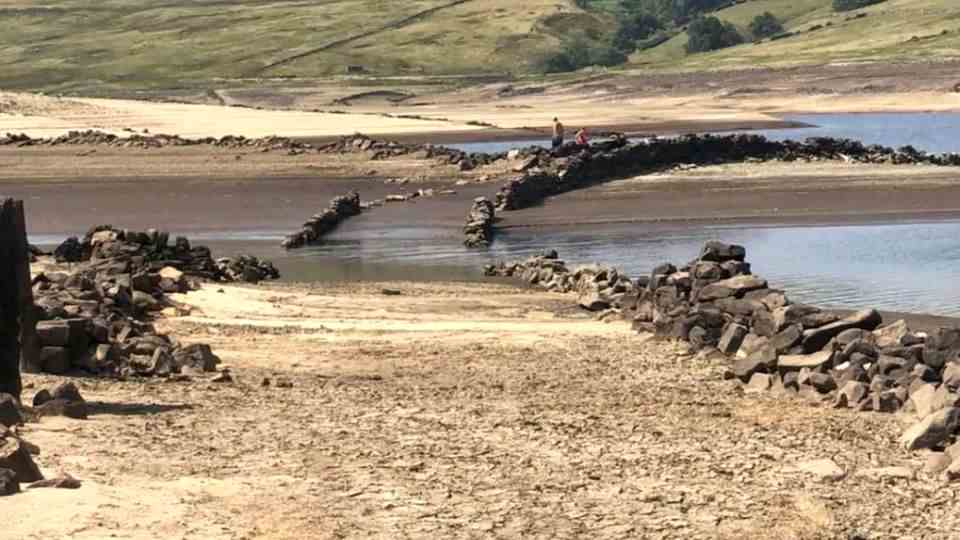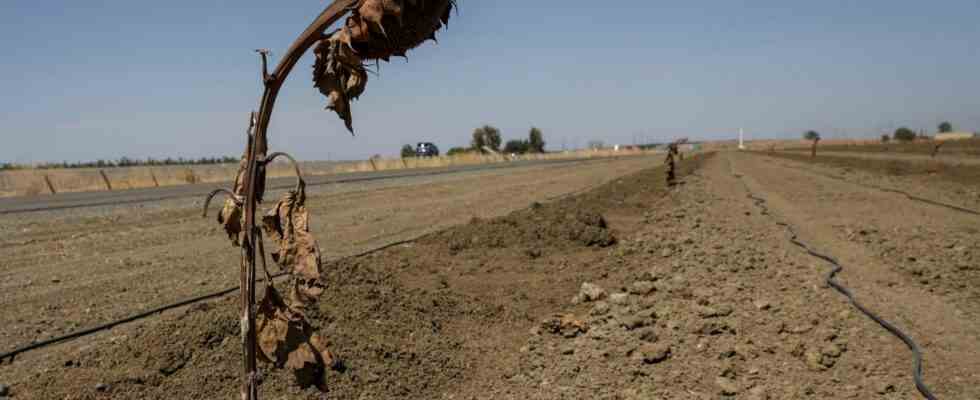Altered Perception
Summer balance: climate change makes the most beautiful time of the year the “season of danger”
A withered sunflower in a field in western Canada’s Alberta province
© Brontë Wittpenn/San Francisco Chronicle/AP/DPA
Exceptional summer or new reality – how should the warm season of 2022 be evaluated. Renowned climate researchers take stock that we are already living in the climate crisis. And in terms of impact, we’re just getting started.
It wasn’t just an extreme summer in our latitudes. There was also drought in China, instead in Pakistan unprecedented heat and then deadly floods. The United States was also hit by torrential rain. From one end of the northern hemisphere to the other, this summer made it clear how climate change is changing the world. “This summer has taught us that we are in the middle of a climate crisis and the effects are already there, right around us,” says Stefan Rahmstorf from the Potsdam Institute for Climate Impact Research (PIK).
“We are moving towards a climate catastrophe on a planetary scale if we do not act quickly and decisively,” warns the climate researcher once again. There was enough of a foretaste of it this year. Already in the spring, India suffered from a heat wave with temperatures of over 45 degrees. In June, a so-called heat dome spanned around 120 million people in North America, followed by thunderstorms and floods that caused major damage in the famous Yellowstone National Park, among other places.
Huge forest fires followed in Spain and Portugal, a deadly glacial collapse in the Italian Dolomites and record drought in half of China, which caused the level of the Yangtze River, which is enormously important for water and electricity supply, to drop dramatically.
Predictions are confirmed, Europe particularly vulnerable to heat waves
It is still too early to record every single extreme weather event as a specific consequence of global warming – although this is increasingly successful in the relevant branch of research. However, the fact that extreme droughts and floods will increase corresponds to the predictions of climate researchers. “The increase in global temperatures caused by the use of fossil fuels has been correctly predicted since the 1970s,” emphasizes Rahmstorf.
Heat waves are getting longer and hotter around the world, droughts and excessive rainfall are increasing, as “predicted three decades ago”, according to the PIK researcher. However, Europe is “a hotspot” of heat waves. They are gaining weight three to four times faster here than in the rest of the northern hemisphere.
In Great Britain, the mark of 40 degrees Celsius was exceeded for the first time since records began. In France, the local heat records were sometimes exceeded by four to five degrees.
The consequences of climate change further intensify this
“One can wonder whether the drought that hit the northern hemisphere in 2022 can be counted among the severest in modern history in terms of extent and intensity,” says Omar Baddour, an expert at the World Meteorological Organization (WMO), who is one of the authors scientific study for the UN climate conference in November in Sharm el-Sheikh, Egypt.
Heat and drought reinforce each other. According to the Intergovernmental Panel on Climate Change (IPCC), the evaporation of water in the atmosphere increases by seven percent for every degree that the earth warms up.
There are also interactions between climate change and its effects. For example, China increased its use of climate-damaging coal this year because many hydroelectric power plants were no longer able to generate electricity due to the widespread drought. Forest fires like those in Spain, Portugal and France release CO2 and ensure that less of the greenhouse gas is absorbed. There are other effects as well. In Africa, for example, the WMO recently registered that 2.5 million people had to leave their homes due to the consequences of climate change. Droughts, floods and rising sea levels drove people to flee.

There is a lack of will to do anything
So from now on, will our summers always be as hot as 2022 or even hotter? “No, we will have cooler summers than 2022,” says IPCC scientist Jean Jouzel. “But those hot summers will be more frequent.” By 2040, 2050 they would then become the “norm”.
Xavier Arnauld de Sartre from the French research organization CNRS does not expect that the dangerous weather extremes of the summer will lead to an intensified fight against climate change. “It wasn’t that no action was taken because the reality of climate change was questioned,” he says. And just as little will happen now just because the effect of global warming is so clearly visible. The problem is “lack of will”.
The US organization Union of Concerned Scientists at least believes that perception will change. She is convinced that summer will no longer be considered the most beautiful time of the year, but rather the “season of danger”.


